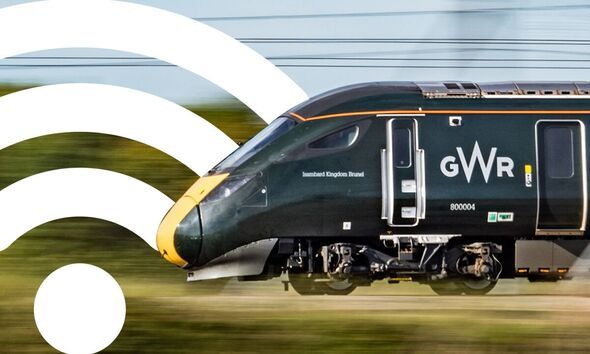
If you've ever tried to work, stream movies or make a quick Zoom call from the train, you'll know just how frustrating it can be. Constant dropouts and dire download speeds are issues most travellers will have faced at some point during a journey across the UK, but an end to bad connectivity could be in sight. Peninsula Transport has just announced a new trial that is bringing significantly improved Wi-Fi to Great Western Railway (GWR) trains.
The technology, inspired by F1 cars, has been developed by the team at Motion Applied (formerly McLaren Applied) and utilises both mobile signals and satellites to ensure passengers maintain a constant signal.
This result delivers superfast, reliable speeds without relying on costly trackside infrastructure - meaning it can be easily scaled across the UK rail network and beyond.
The big question is...does it actually work? The only way to find out was to jump on a train myself and see what speeds are really achievable. My journey took me on a 60-mile high-speed return run from London to Newbury, and the results were pretty impressive.
During the 90-minute journey, my laptop, iPad and phone stayed fully connected, and I was easily able to work, download large files and stream a bit of Netflix without any issues.
To see what speeds we were being beamed to my devices, I took regular readings throughout the journey, with things varying from 35Mbps to over 150Mbps (that's faster than the UK fixed-line average). Upload speeds also averaged around 30Mbps.

Now, this was only a short test in pretty built-up areas where there are plenty of phone masts. The train also wasn't full to the brim with hundreds of passengers, so it's unclear what impact this would have on overall speeds. As most people know, the more users trying to access a network, the slower it can get.
That said, the download rate and reliability I witnessed were still pretty impressive and far better than anything I've experienced before when travelling on the UK's train network.
So, how has it all been made possible and what happens next?
Motion Applied is supplying the tech, around the size of a pizza box, which is then fitted to current trains. The system works by constantly looking for the best signal and can connect to any phone mast or satellite that is available.

As ex-F1 boss Nick Fry, now Chairman of Motion Applied, explains, "Motion Applied recognised that rail networks have struggled with onboard WiFi for customers and we have used technology originally developed for F1 cars to reliably connect a fast moving vehicle by reducing signal drop outs and seamlessly switch cell networks.
"The challenges faced in transmitting data to and from a fast moving train have many parallels with motorsport and the application of our industry-leading data link aggregation systems specifically tailored to the unique demands of rail will provide an improved customer experience using racing technology"
There's no word on a full rollout, but it's hoped more customers will begin getting better connectivity from next year.
Contact to : xlf550402@gmail.com
Copyright © boyuanhulian 2020 - 2023. All Right Reserved.